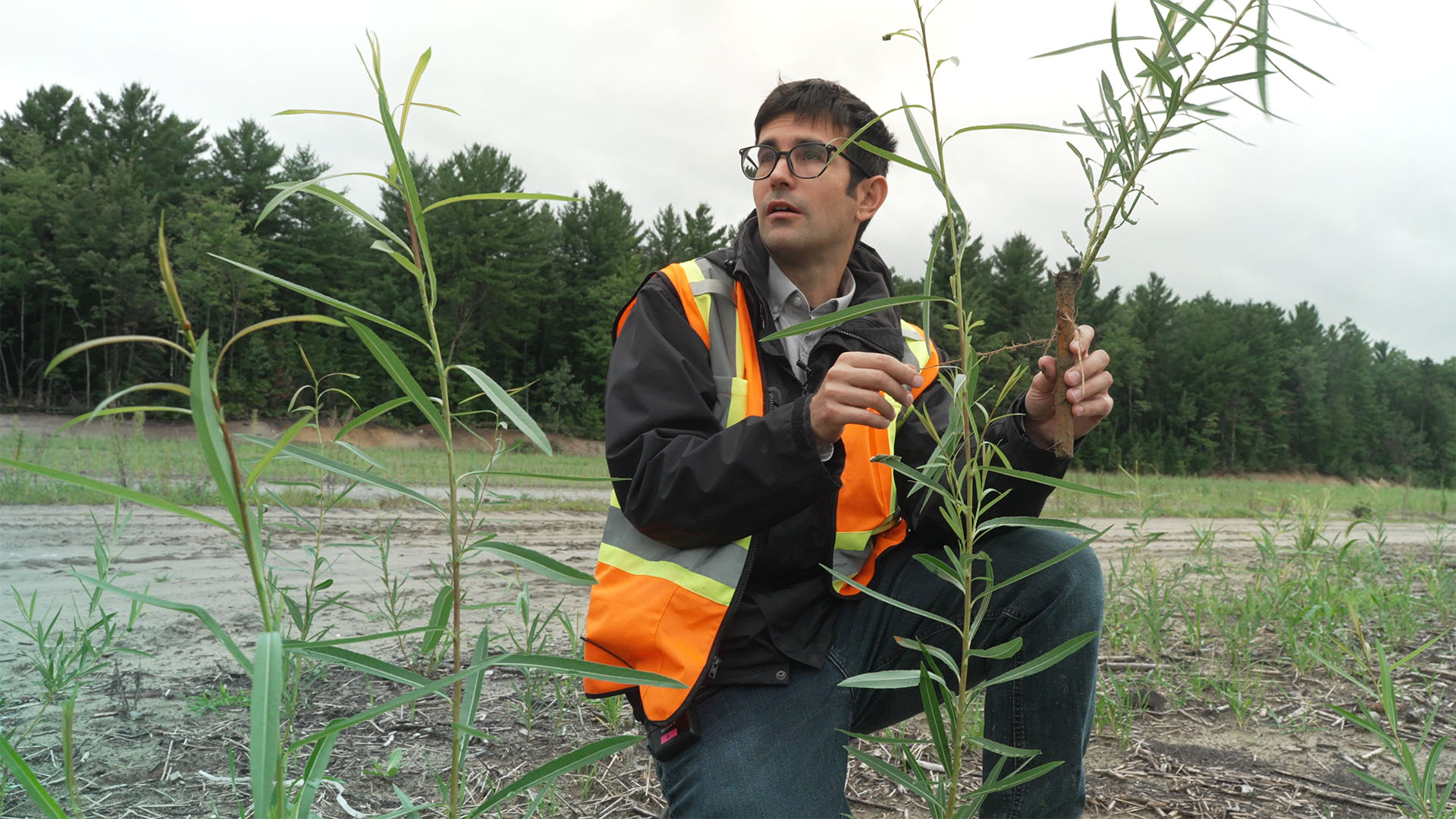Tree Canada has always been committed to finding innovative solutions for environmental restoration and climate resilience. One project we are very excited about involves the use of willows to address critical environmental challenges like soil erosion and land restoration.
More Than Just a Tree: A Powerful Solution to Environmental Challenges
Soil erosion strips away the earth’s most fertile layers, leading to reduced crop yields and a loss of biodiversity. Willows have a remarkable ability to heal the land. By planting them in areas affected by erosion, such as agricultural lands , their deep roots help anchor the soil, preventing further degradation and restoring balance.
What’s truly remarkable about willows is their ability to regenerate from the stump after each harvest. As they grow back, their biomass can be harvested and returned to the soil, enhancing its fertility and nutrient composition. This continuous cycle of regeneration ensures that the land remains not only stable, but vibrant, healthy, and full of life, helping the entire ecosystem flourish with each new season.

Aerial view of densely planted willow saplings, forming a vibrant green canopy in early growth.
Soil Remediation in Saint-Patrice-de-Sherrington
Located in the fertile Montérégie region of Québec, the Saint-Patrice-de-Sherrington project focuses on restoring agricultural land affected by soil erosion. This area has long been recognized for its agricultural significance, with several farms specializing in vegetable production. However, the rich soils have been eroding over time, threatening the land’s agricultural productivity.
To address this, the project saw the planting of willows at an exceptionally high density—18,513 stems per hectare—much higher than the typical 1,000 to 2,000 stems seen in traditional forest plantings. This unique approach allows for rapid stabilization and restoration of the soil. A total of 97,191 willows were planted across a 5.3-hectare area in the fall of 2024. With regular harvesting, the willows will not only help stabilize the soil but will also have their biomass returned to the earth.
Early planting success will be monitored closely by Ramo with survival assessments in the first year. These assessments will ensure that the willows are properly established.
The benefits of this project go beyond just the immediate improvements to soil health—it will help ensure the land’s agricultural prosperity for years to come, creating a sustainable solution for future generations of farmers.

Francis Allard, CEO of Ramo, examines a young planted willow.
Collaborating with Ramo on Solutions for the Environment
This project is part of Tree Canada’s ongoing collaboration with Ramo, one of our Québec-based planting contractors. Together, we are working to implement nature-based solutions that address complex environmental challenges. In previous projects, our partnership has involved using willows for various applications, including creating visual screens around industrial facilities and improving water quality by cleaning contaminated leachate at landfill sites.
Willows are particularly effective in these applications due to their heightened evapotranspiration—meaning they absorb more water than other tree species – and their ability to thrive in dense plantings. These features make them an ideal choice for improving the health of contaminated environments, while providing other benefits like soil stabilization and pollution absorption.
Watch the video to see how these willow projects are helping transform the land!
Back to all articles